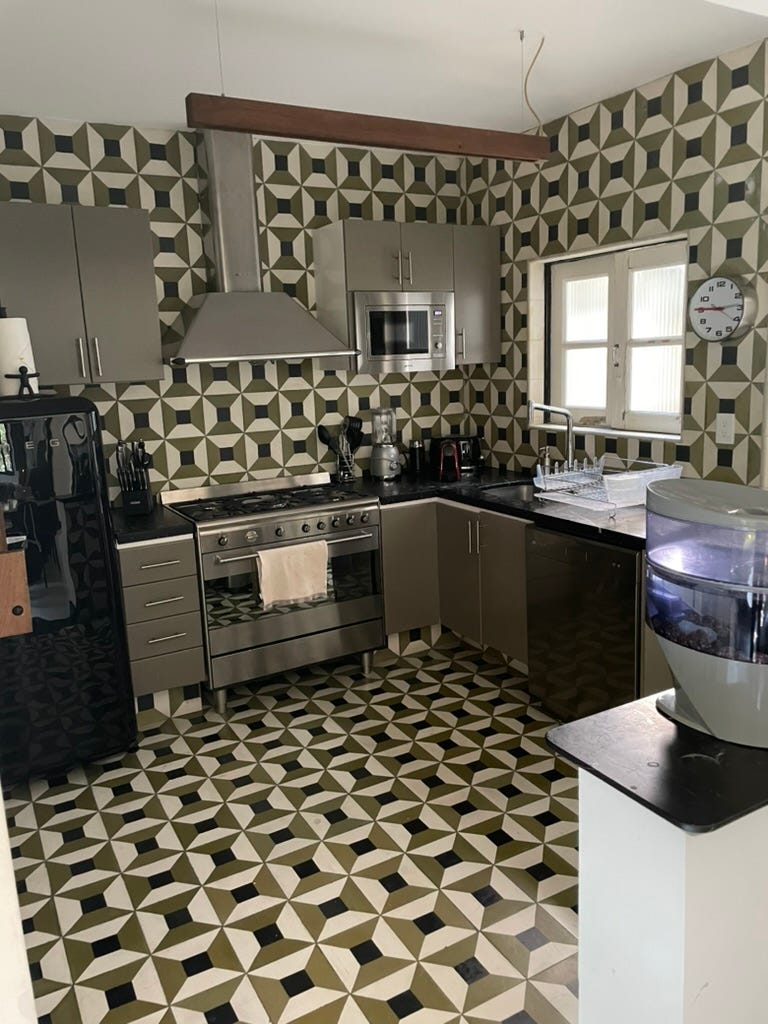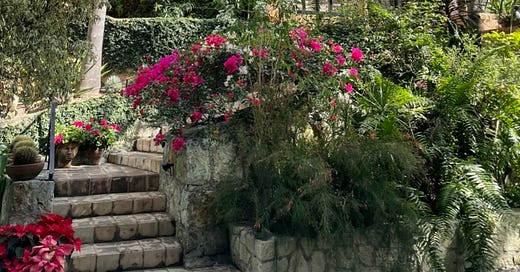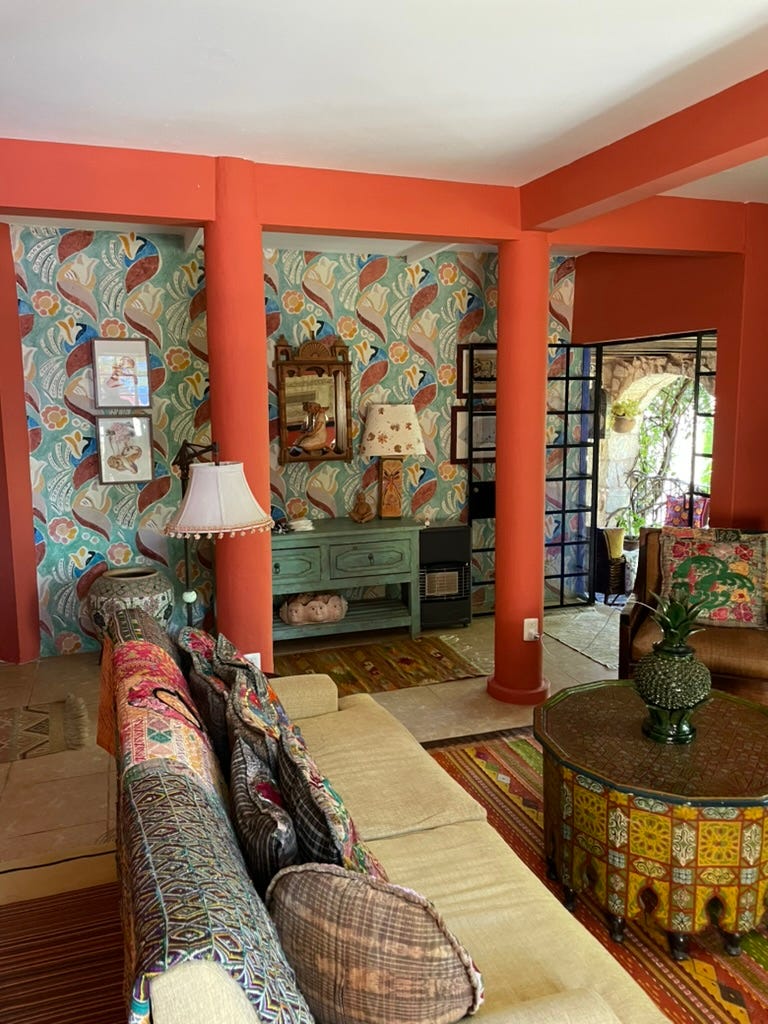We would not be living in Oaxaca if it weren’t for Airbnb.
Please believe me, it feels weird to say that out loud. Airbnb has been a hugely destructive force in a great many places, Oaxaca included. We’ve heard many stories about how incredibly difficult the platform has made it for locals to find apartments here, as so much of the housing stock has been turned into short-stay Airbnbs. When New York City decided to effectively kill Airbnb in the city by making it so that no one could stay in a rental for less than 30 days without the owner also being on-premise the entire time, we welcomed the legislation.
But, in the spring of 2021, Dotdash Meredith sent out an email to its employees giving them a target return-to-office date with a note which said, effectively, get your travel out of your system because pretty soon you’ll be back at your desks.
In New York my “office space” was a desk we had placed next to our bed in a corner of our bedroom, a relatively small chamber without a door which sat at the top of a metal spiral staircase. Behind my desk was a large, very serious wooden dresser made of solid oak we purchased from Room & Board, and immediately above my head was our hulking, wheezing wall-mounted air conditioner, which made the room both intolerably cold and impossibly loud.
In my cramped corner I had just enough room for the desk and a rolling office chair. The best part of the setup was the view out the window in our bedroom, which looked more-or-less directly at my favorite building in New York City, the El Dorado, a gargantuan, historic apartment building with twin towers which was owned almost entirely by celebrities and the ultra-wealthy as an investment property or pied-à-terre, leaving it essentially empty and without signs of life almost all-year long. My home office was a space a New York real estate agent might call “cozy” and a normal person would call “claustrophobic,” and while I loathed going to the office, at home I had only enough room to work and to breath, if I didn’t exhale too deeply.
When the email arrived announcing we’d be chained to our desks again in the near future, Andrea and I sat on the couch and talked about what it meant for us. Should we try working remotely for a week or two? And if so, from where?
Mexico was an easy choice. We’d been to Mexico City several times before and loved it so much we decided to make a trip there an annual ritual, decamping to the deservedly tourist-loved neighborhoods of Roma Norte and Condesa every November instead of celebrating Thanksgiving, a holiday neither of us particularly enjoy. This time, though, we wanted something new, and Oaxaca checked all of our boxes. It was somewhere we’d never been before; it was famed, even in Mexico, for its food; it was inexpensive; and since Mexico lies in Central Standard Time if we went there we wouldn’t need to worry about being in a time zone that would also come with a debilitating schedule.
Because we were going for an extended stay we knew a hotel wouldn’t be suitable, and both Andrea and I began combing through Airbnb listings.
Many Oaxacan Airbnbs seem nice at first glance, but upon closer inspection are revealed to actually be a bit barren, with cold tile floors devoid of rugs, hanging light fixtures missing shades (something very common here), or with beds and furniture which looked either too soft or too spartan.
It was Andrea who found a listing which looked perfect, a large, tree-enclosed house with a pool (!) in the village of San Agustín Etla, which lies about 25-to-30 minutes away from the city. It was Penny and Victor’s house, which, as you may already know, we now own. On day one we were enchanted. By day five, to paraphrase Peter Mayle (whose book, A Year in Provence, this newsletter’s name was inspired by) in our minds we had already moved in.
It was a special place, with a special setup. The house was originally built to be two units, one floor for a married couple and another for one of the couple’s parents. While Penny and Victor had originally combined the upstairs and downstairs by knocking a hole in the upstairs floor and installing a wrought iron spiral staircase, they later decided it was simply more house than they needed and so they removed the staircase, sealed up the hole in the floor, and returned the downstairs to its original, separate state. They lived upstairs and guests rented the downstairs, and it became a side-business of sorts.
When we began the process of purchasing the home we decided that we, too, would run the downstairs as an Airbnb. Because we would live in the house at the same time as the renters were here we wouldn’t need to feel guilty about removing housing stock from the tight Oaxacan market, and because we’re not in the city center and don’t have automatic bookings turned on we could find guests looking for the slower, quieter, less overtly touristy kind of experience San Agustín Etla has to offer.
So, that’s what we did.
When Penny and Victor sold us their house it came with a fair amount of art and furnishings, something which made the prospect of moving even more attractive. Not only does their own aesthetic very much match our own, and particularly my desire for an artistically eclectic living space, the downstairs rental unit didn’t require us to completely start from scratch.
Still, getting it ready was a process. One of the reasons we fell so in love with the house was because of the care and attention Penny and Victor had put into decorating the downstairs, which felt like an actual home and not a space prepared to be a short term rental. Though, as anyone might expect, when they moved out they took their favorite pieces of art and furniture with them. The apartment was in great shape and still handsomely decorated, but there were empty spots on walls and we needed a new dining room table with chairs, a coffee table, two end tables, two night stands, and a television stand. Finding these things wasn’t the only problem either; we also needed to be sure whatever we did buy wouldn’t inadvertently wreck the vibe we were so captivated by.
We’ve stayed in a lot of Airbnbs, and even the ones which have qualified for the platform’s rarified design-oriented categories had major flaws: bathrooms with poorly attached fixtures or water-stained counters, decorations clearly purchased in bulk from an IKEA, generic art, and kitchens which looked fancy on the surface but were actually much cheaper and flimsier than their stainless steel veneer let on. We knew what we needed to avoid.

Because we lived downstairs for the first couple of months we occupied the house, we also knew what needed fixing. The downstairs bathroom’s vanity, while made from solid wood, was water stained, and the faucet leaked and twisted in the wood whenever you used the handle. The outdoor cushions in the palapa were faded and had holes, a problem exacerbated by our newly-adopted dogs, who hadn’t yet learned the rules of the house (no dogs on the outdoor furniture!). The couch needed new cushions made and the throw pillows needed new stuffing. And in general we just needed to make small improvements; a new dish draining rack, freshly sharpened knives, and new nonstick pots and pans.
Over the course of many weeks we acquired the items we needed. We washed glass jars and filled them with pantry staples like sugar, flour, and Oaxacan sea salt, and I bought coffee from the local organic co-op and ground it the day before our first guests arrived. We went to Teotitlán del Valle and Santa Ana del Valle and bought beautiful, intricately woven rugs to cover bare spots on the Mexican tile floor. We hung art and filled the built-in shelves in the living room with guidebooks about Mexico and other countries and with both contemporary fiction and pulp novels by the Beat Generation. Edgar re-painted the inside of the cabinets and the bedroom ceilings, brightening the rooms. We installed new furniture and brought a 55-inch television into the living room, and hung potted plants from the ceiling of the balcony, which has seating for two people. And we had our favorite carpenter, Edher refinish the wooden vanity in the bathroom, discovering in the process it’s made from a mixture of huanacastle and mahogany, two of the fanciest and most expensive woods available in Mexico. The bathroom will eventually be completely retiled, and we’ve begun investigating how we can heat our pool with solar energy, making it usable all-year round.
Since first moving to Oaxaca we’ve struggled with what to name our home. The indigenous name of the town, “Loohvana,” had already been used by a local expat-turned-drug dealer, and we were strongly advised not to name our house in a way that would encourage would-be drug seekers to show up at our front door. Other common terms, like colibri (hummingbird) were out, having been so extensively used they were almost trite.
I began pitching Andrea on the name “Meridian,” which means, amongst other definitions, “the zenith of a given place” and “a high point (as of development or prosperity).” I’m not 100% sure she’s sold on the name, but from the high vantage point of my office which looks out over the surrounding area and distant valley, it feels right.
The apartment already looked good, even after Penny and Victor removed some of their wonderful art and furniture. Now, after a solid sprucing up and the placement of new rugs and art, it had once again begun to shine.

Our first guests arrived around a week ago, friends of a friend of Penny and Victor who agreed to essentially be our test guests in exchange for a reduced nightly rate. Edgar calls them 'Los Huéspedes,’ a polite term used for guests who are paid lodgers.
Having the Huéspedes here has been easy, as they’re conscientious guests who, even though we’d never met them, effectively weren’t complete strangers. It was also a good way to see what it would feel like to have people in our home who we didn’t already know.
Simply on a practical level it’s been a good experience. We’ve been able to gain a lot of insight into how we can fine-tune the hosting experience to make people as comfortable as possible within the a-hotel-but-not-a-hotel framework that Airbnb has created. We also have been able to feel out what it’s like having less (but not no) privacy at our home.
But more important than letting us dial in the logistics of our hosting, having these first Huéspedes here has given me a clearer vision of a type of life that, until now, had been entirely imaginary. Running a bed-and-breakfast is a legitimate fantasy for some, and our experiences on the other side of the host/guest equation, my desire to cook for others, and our already substantial interest in the arts, crafts, sights, and culture of Oaxaca made the idea of doing that very thing ourselves seem not entirely impossible. Our extremely limited scale, a single apartment which can house, at most, four guests at a time, creates an opportunity for a very dialed-in, very customized experience, one in which I bring people on tours of the area (or connect them with trained tour guides), cook for them from a limited menu, introduce them to local artisans, and in other ways create a small, very idiosyncratic business.
Whether or not this will happen as I’ve envisioned it remains to be seen. But we have moved from the theoretical into the actual and the Airbnb is ready and open for business. It’s not hard to picture helping other people fall in love with Oaxaca in the same way we did. Just, this time the house isn’t for sale.
Oaxaca welcomes you!







Oh, heaven! And serendipity too. What a lovely place and spot. Buen suerte! Great post.